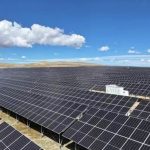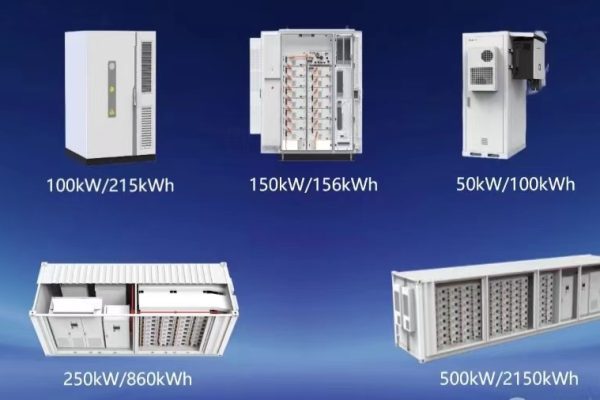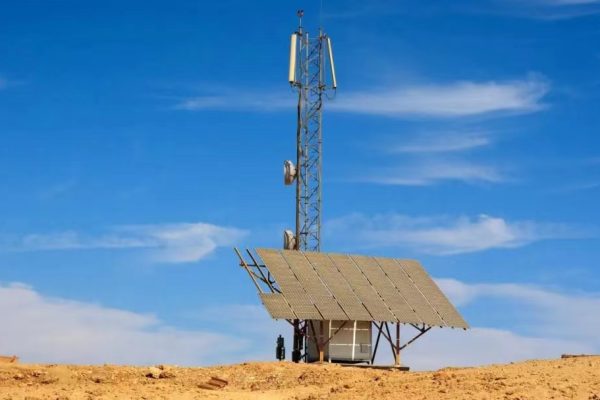Practical Guidelines for Small and Medium Enterprises Seeking Energy Independence
As small and medium-sized enterprises (SMEs) face rising energy costs and grid instability, more companies are turning to 10kW solar + battery storage systems to secure reliable, affordable power.
Designing such systems requires careful planning — balancing PV generation, battery capacity, inverter configuration, and load management.
This article walks through the step-by-step process of designing a 10kW PV-Storage System tailored for SMEs, covering both technical and commercial aspects.
1. Why SMEs Are Adopting PV-Storage Solutions
For many SMEs — from small factories to retail stores — energy represents a major operating cost.
Key Motivations:
- Reduce electricity bills: Self-consume solar power during the day.
- Ensure backup power: Maintain operations during grid outages.
- Improve energy independence: Hedge against price fluctuations.
- Enhance green credentials: Support ESG and carbon reduction goals.
A 10kW PV + Storage system is ideal for SMEs because it provides meaningful savings without requiring large capital investment or complex infrastructure.
2. Step 1 – Understanding Energy Demand
Before any design begins, you must analyze the SME’s load profile:
| Parameter | Typical Range (for SMEs) | Example |
|---|---|---|
| Daily consumption | 40–100 kWh/day | Small workshop: 60 kWh/day |
| Peak load | 8–12 kW | Machines + lighting |
| Operating hours | 8–12 hours/day | 8:00–20:00 typical |
| Critical loads | 20–40% of total | Computers, lights, POS systems |
Use smart meters or historical utility bills to estimate:
- Daytime consumption (for solar self-use)
- Nighttime consumption (for storage use)
Accurate load data ensures optimal sizing for both PV and battery capacity.
3. Step 2 – Determining Solar Capacity (10kW PV)
A 10kW PV array typically generates:
- Average output: 35–50 kWh/day (depending on location and irradiation)
- Annual yield: ~12,000–18,000 kWh
Recommended Configuration:
| Component | Specification |
|---|---|
| PV Panels | 25 × 400W monocrystalline modules |
| Array Capacity | 10kW DC |
| Mounting Type | Rooftop or carport |
| Orientation | South-facing (north in southern hemisphere) |
| Tilt Angle | Equal to local latitude ±10° |
Include MPPT (Maximum Power Point Tracking) in the inverter to optimize efficiency under changing sunlight conditions.
4. Step 3 – Choosing the Battery Capacity
The battery stores solar energy for evening or emergency use.
Key Design Principle:
Battery capacity should cover nighttime consumption + backup reserve.
| Scenario | Recommended Battery Capacity | Example |
|---|---|---|
| Basic self-consumption | 10–15 kWh | 1–1.5 hours full load backup |
| Partial backup + savings | 20–25 kWh | Covers critical loads overnight |
| Full off-grid capability | 30–40 kWh | 6–8 hours autonomy |
Battery Type Recommendation:
- LFP (LiFePO₄) — stable chemistry, long cycle life, safe for commercial use
- Cycle life: 6,000+ cycles
- Depth of Discharge (DoD): up to 90%
For SMEs, a 20 kWh LFP battery usually strikes the right balance between cost and performance.
5. Step 4 – Selecting the Right Inverter
The inverter is the system’s “brain,” coordinating PV input, battery charging/discharging, and grid interaction.
Recommended Inverter Type: Hybrid Inverter (On/Off-Grid)
| Feature | Function |
|---|---|
| PV Input | Converts DC to AC for immediate use |
| Battery Management | Stores excess power in battery |
| Grid-tie Control | Sells or exchanges power with grid |
| Backup Output | Provides emergency power when grid fails |
Sizing Guide:
- Rated Power: 10 kW (match PV size)
- Battery Input: 48–120V DC range
- AC Output: 230V single-phase or 400V three-phase
- Efficiency: ≥97%
Optional Features:
- Anti-islanding protection (for grid safety)
- Communication ports (RS485, CAN, Wi-Fi)
- Compatible with remote EMS or monitoring app
6. Step 5 – System Topology: AC-Coupled vs. DC-Coupled
DC-Coupled Systems
- PV and battery share a common DC bus
- Energy passes through one inverter
- Higher efficiency, fewer conversion losses
Ideal for new installations and hybrid systems.
AC-Coupled Systems
- Separate PV inverter and battery inverter connected to AC bus
- More flexible for retrofits (adding storage to existing PV)
For SMEs upgrading an existing 10kW solar setup, AC-coupled is often the easier solution.
7. Step 6 – Control and Monitoring
A smart Energy Management System (EMS) coordinates PV, battery, and grid operations.
Functions:
- Prioritize self-consumption
- Time-of-use optimization (charge during low tariffs)
- Backup mode switching
- Data logging and remote control
Use systems compatible with Modbus/TCP or cloud-based monitoring platforms, allowing owners to track daily performance from their phone or PC.
8. Step 7 – System Protection and Safety
SMEs need reliable protection to prevent downtime and hazards.
Core Protection Components:
| Device | Function |
|---|---|
| DC Isolator | Safe PV disconnection |
| Fuse / MCB / MCCB | Overcurrent protection |
| SPD (Surge Protection Device) | Lightning protection |
| BMS (Battery Management System) | Monitors temperature, voltage, SOC |
| Fire suppression | Optional for indoor systems |
Ensure compliance with local safety codes (IEC 62109, UL 9540, or equivalent).
9. Step 8 – Installation Environment
SME installations usually occur in rooftop, warehouse, or outdoor cabinet formats.
Environmental Design Tips:
- Cabinet enclosure: IP54 or higher for dust and water resistance
- Ventilation: Required for inverter and battery cooling
- Temperature range: Operate 0°C to 45°C
- Avoid direct sunlight: Reduces battery degradation
For outdoor systems, consider integrated PV + Storage + Inverter cabinets — compact, weatherproof, and easier to install.
10. Step 9 – System Performance Example
Example: 10kW PV + 20kWh Battery (LFP)
| Parameter | Value |
|---|---|
| Location | Bangkok, Thailand |
| Daily Solar Output | 45 kWh |
| Battery Storage | 20 kWh |
| Self-Consumption Ratio | 85% |
| Grid Export | 10–15% |
| Backup Duration | 6 hours for critical loads |
| Payback Period | 3.5–4 years |
Such a system can cut monthly electricity bills by 50–70% and ensure continuous operation during outages.
11. Step 10 – Cost Estimation and ROI
Typical System Cost (2025)
| Component | Estimated Cost (USD) |
|---|---|
| 10kW PV panels | $4,000–$5,000 |
| 20kWh LFP battery | $3,500–$4,000 |
| 10kW hybrid inverter | $2,000–$2,500 |
| BOS (cables, breakers, frame, labor) | $2,000–$3,000 |
| Total Cost | $11,000–$14,000 |
Financial Analysis
| Metric | Value |
|---|---|
| Annual energy savings | $2,500–$3,000 |
| Payback period | 3.5–5 years |
| System lifespan | 10–15 years |
| IRR (Internal Rate of Return) | 18–25% |
For SMEs in regions with high tariffs or unreliable grids, such systems are both technically and financially attractive.
12. Step 11 – Key Design Optimization Tips
- Match PV and load curve: Avoid oversizing the array if daytime load is low.
- Use smart EMS control: Shift non-critical loads (e.g., air conditioning) to daytime solar hours.
- Plan for modular expansion: Choose inverters and batteries that can scale (10→20kW).
- Consider TOU tariffs: Charge at night, discharge during peak pricing.
- Design for safety & certification: Always meet local regulatory standards.
13. Practical System Layout Example
Configuration:
- PV Array: 10kW rooftop
- Hybrid Inverter: 10kW, 2 MPPTs
- Battery Bank: 20kWh LFP, wall-mounted
- Control Cabinet: Includes isolators, SPD, smart meter
- EMS: Cloud-based monitoring via Wi-Fi
Flow Diagram:
PV → Hybrid Inverter → AC Load / Battery
Battery ↔ EMS ↔ Grid
This setup ensures full flexibility: grid-tied during the day, backup-ready at night.
14. Long-Term Benefits for SMEs
| Benefit | Description |
|---|---|
| Operational Continuity | Avoid losses during power cuts |
| Predictable Energy Costs | Hedge against grid tariff increases |
| Brand Image | Green, sustainable business reputation |
| Government Incentives | Eligible for carbon credits or net-metering |
| Asset Value | Increased property valuation |
The combination of PV + Storage transforms SMEs from passive consumers to active energy managers.
Designing a 10kW PV-Storage system for SMEs is not only technically achievable — it’s one of the smartest investments for future-proofing operations.
By properly sizing PV, battery, and inverter components, SMEs can:
- Achieve energy cost savings up to 70%,
- Gain reliable backup power, and
- Support sustainability targets.
With rapid advancements in LFP batteries, hybrid inverters, and smart EMS, these systems are more efficient, compact, and affordable than ever before.
For energy solution providers and exporters, offering well-designed 10kW PV+Storage packages with clear ROI and reliability data is key to winning SME customers worldwide.









